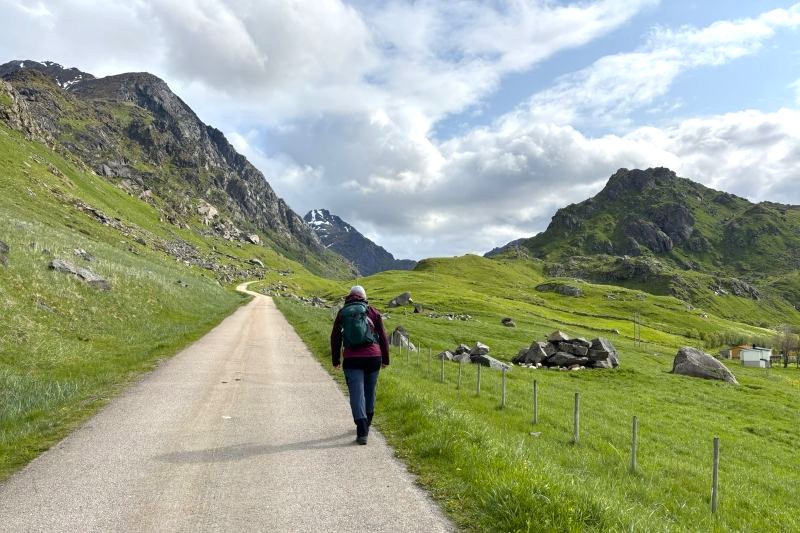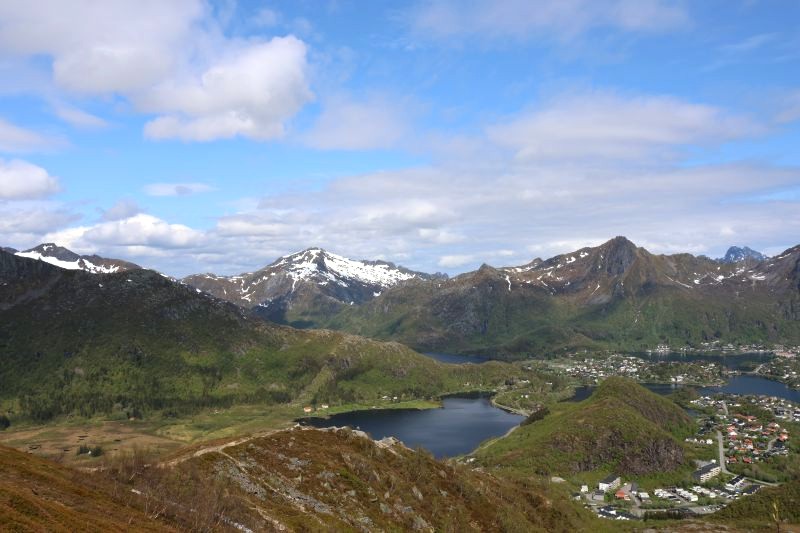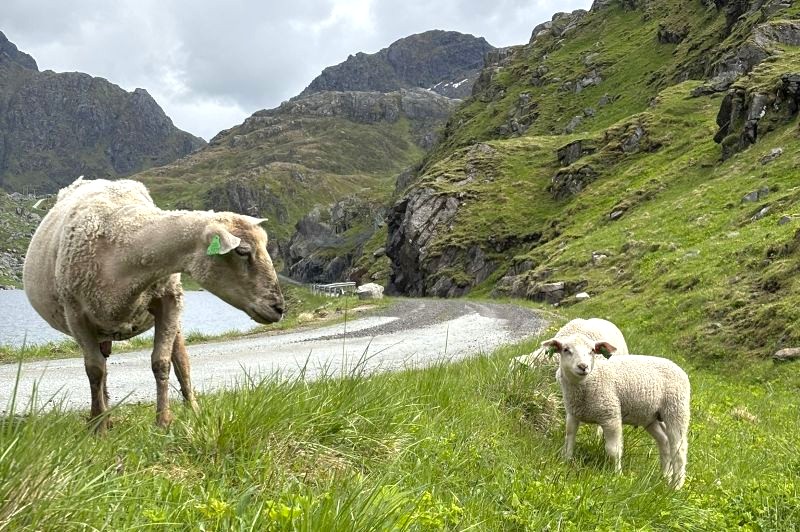Hiking the Lofoten Islands: The Best Hikes and Practical Tips
Hiking the Lofoten Islands: a dream for every hiking enthusiast. This archipelago in northern Norway offers an impressive backdrop of steep mountain peaks, fjords, white sandy beaches and picturesque fishing villages. During our trip, we discovered two accessible but spectacular hikes: Tjeldbergtinden, near Svolvær, and Mannen, near the well-known Haukland beach. In this blog, I share my experiences and practical tips.
Tjeldbergtinden
This relatively short but tough climb to the top of Tjeldbergtinden treats you to stunning views of the towns of Svolvær and Kabelvåg, the Vestfjord, and the surrounding mountain peaks such as Blåtind and Fløya. The walk starts just outside the centre of Svolvær. From the car park, follow the signpost towards Linken and take the gravel road uphill. After just over a kilometre, you will come across a sign on your right; turn right here towards Tjeldbergtinden. From there, the real work begins: the path gets steeper and more technical. Once on the ridge, you can continue scrambling up to one of the two peaks. At the steepest part, a rope hangs from the rock to support you as you climb.
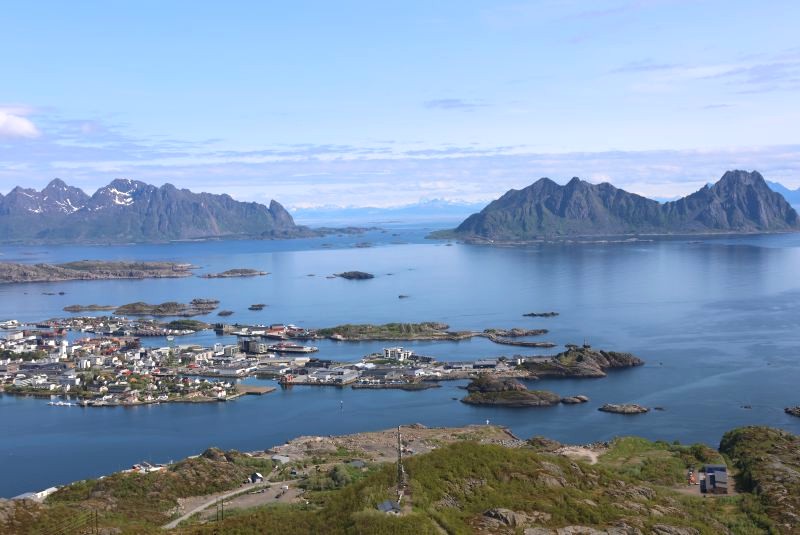
Length & Difficulty
- Distance: ± 4 km (round trip)
- Elevation gain: 367 m
- Duration: ± 2-3 hours
- Difficulty: Moderate. The trail is easy to follow, but fairly technical and steep towards the end.
- Parking: Leave the E10 and follow Kongsvatnveien. Just past the Esso petrol station and the Kiwi supermarket, you can park on the left.
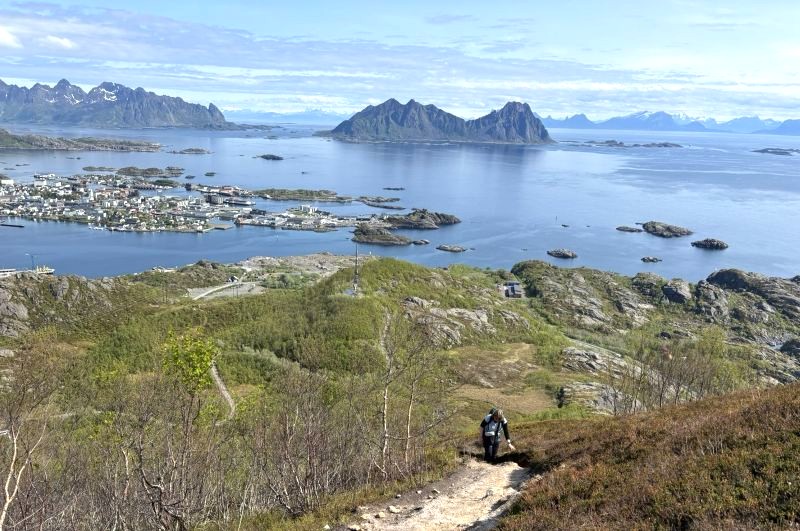
Mannen
Mount Mannen, standing 400 metres above sea level, offers spectacular views of the snow-white sandy beaches of both Haukland and Uttakleiv. Start from the car park at the new visitor centre of Haukland Beach and follow the gravel road inland, away from the coast. After about 500 metres, take the path on the left that climbs along the mountainside. The trail is easy to walk on, but can be slippery and muddy in wet weather. So make sure to wear sturdy hiking shoes. Alternatively, you can opt for the coastal route between Haukland and Uttakleiv. This 8-kilometre route is flat, well-maintained, and suitable for the whole family.
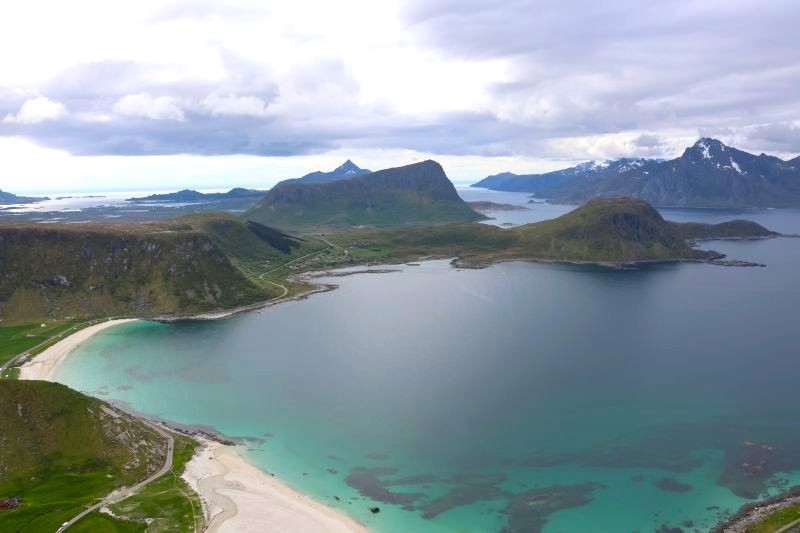
Length & Difficulty
- Distance: ± 4 km (round trip)
- Elevation gain: 400 m
- Duration: ± 2-3 hours
- Difficulty: Easy to moderate. The trail is easy to follow, but gets steeper towards the end.
- Parking: Paid parking at the Haukland Beach visitor centre.
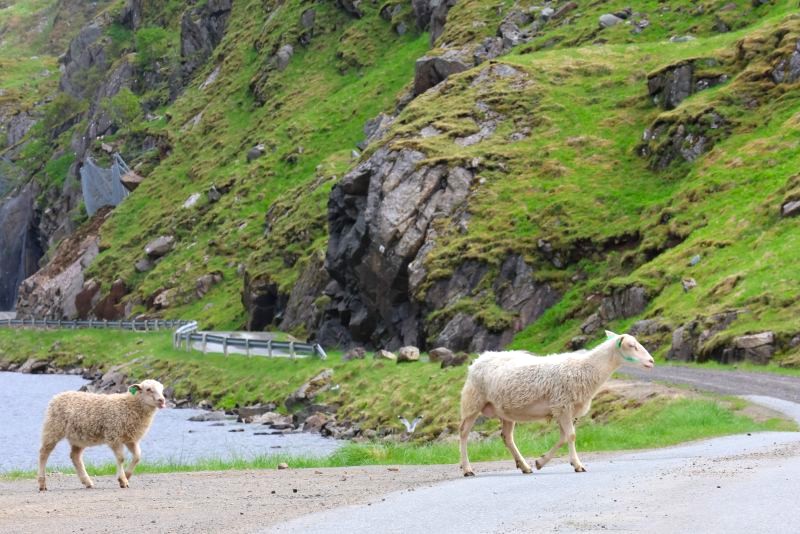
Hiking the Lofoten Islands: Practical Tips
Difficulty & Terrain
Hikes in the Lofoten are often short but intense. The climbs are usually steep and the terrain can be challenging: think of loose stones, muddy paths and slippery rocks. A decent level of fitness and a healthy dose of courage come in handy. Many routes are colour-coded to indicate the level of difficulty:
- Green: easy, suitable for beginners.
- Blue: moderate, often with more elevation gain and rough terrain.
- Red: difficult, suitable only for experienced hikers.
Note: These colour codes are only an indication. Even an easy (green) trail can be challenging, especially in bad weather. On the Lofoten Islands, some scrambling over rocks is often just part of the hike.
Signage
Many hiking routes are often unmarked or only partially signposted. You often have to find your own way to the top. Fortunately, there are usually paint markings on the rocks or stone men (stacked stones) along the way to guide you in the right direction. You can also use a hiking app or a GPX track on your smartphone if needed.
Equipment
Good equipment is essential when hiking in the Lofoten. Sturdy, waterproof hiking boots with a good tread are indispensable on the often rough terrain. Also wear comfortable hiking socks, bring a rain jacket and dress in layers so you can quickly adapt to the changing weather conditions. Finally, don't forget to carry enough water and a few snacks in your rucksack.
Respect for Nature
Nature in the Lofoten Islands is breathtakingly beautiful, but also fragile, especially with the increasing number of visitors. Stay on the paths, take all your litter with you and always respect local guidelines. Wild camping is allowed in Norway, but not near houses, on private property or in sensitive nature reserves.
Best Period
The best months for hiking the Lofoten Islands are June to September. Then most trails are snow-free and the days are long. However, keep in mind that higher peaks may still have snow in June. Popular routes, such as Reinebringen, can be quite crowded in high season. From late May to mid-July you can enjoy the midnight sun in the Lofoten Islands. During that period, you can also hike in the middle of the night to avoid the crowds.
